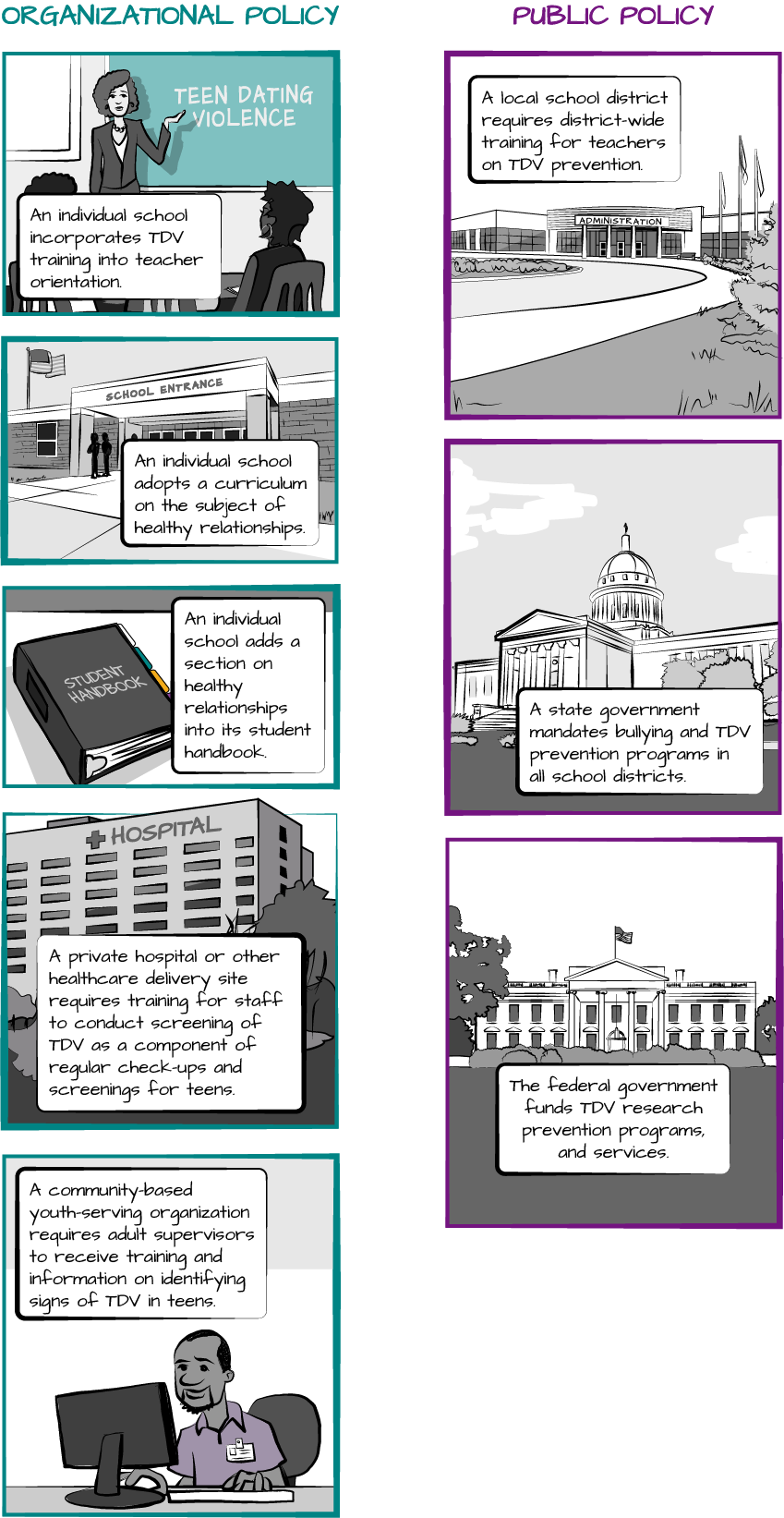Policy is defined by CDC as a law, regulation, procedure, administrative action, incentive, or voluntary practice of governments and other institutions and organizations.
Based on an analysis of the problems, trends, causes, and potential solutions, a policy can do the following[24]:
- Raise awareness and create mutual understanding about a situation
- Articulate principles that justify and guide action
- Contribute to generating consensus on the actions to be undertaken
- Provide a framework for action
- Define institutional responsibilities and mechanisms of coordination
- Engage a variety of partners
ORGANIZATIONAL AND PUBLIC POLICY
Policies generally operate at the systems level, applying to large sectors or populations, and set the context in which individual decisions and actions are made. Policy can aid efforts to influence change in norms and across the social ecological model by setting the parameters for many individual choices or taking more direct action at the population level to protect the population. Policy can also support and sustain other strategies to prevent TDV. For example, an educational curriculum is more likely to be implemented and sustained during economic downturn if it is required by a school system’s internal policy. The Dating Matters Guide to Informing Policy focuses on two specific levels of policy: organizational policy and public policy.
Public policies are systems-based strategies, such as regulations, laws, and ordinances.
- Regulatory policies are rules, principles, or methods established by government agencies that have regulatory authority for products or services.
- Legislative policies involve laws or ordinances passed by local, state, or federal governing bodies.
- Public policies can be established at the local, state, and federal levels. Policy strategies can be developed to influence personal decisions such as permitting an individual to request a protection order from the court, or to ensure that the environments and systems in which we live, learn, work, and play are safer.




